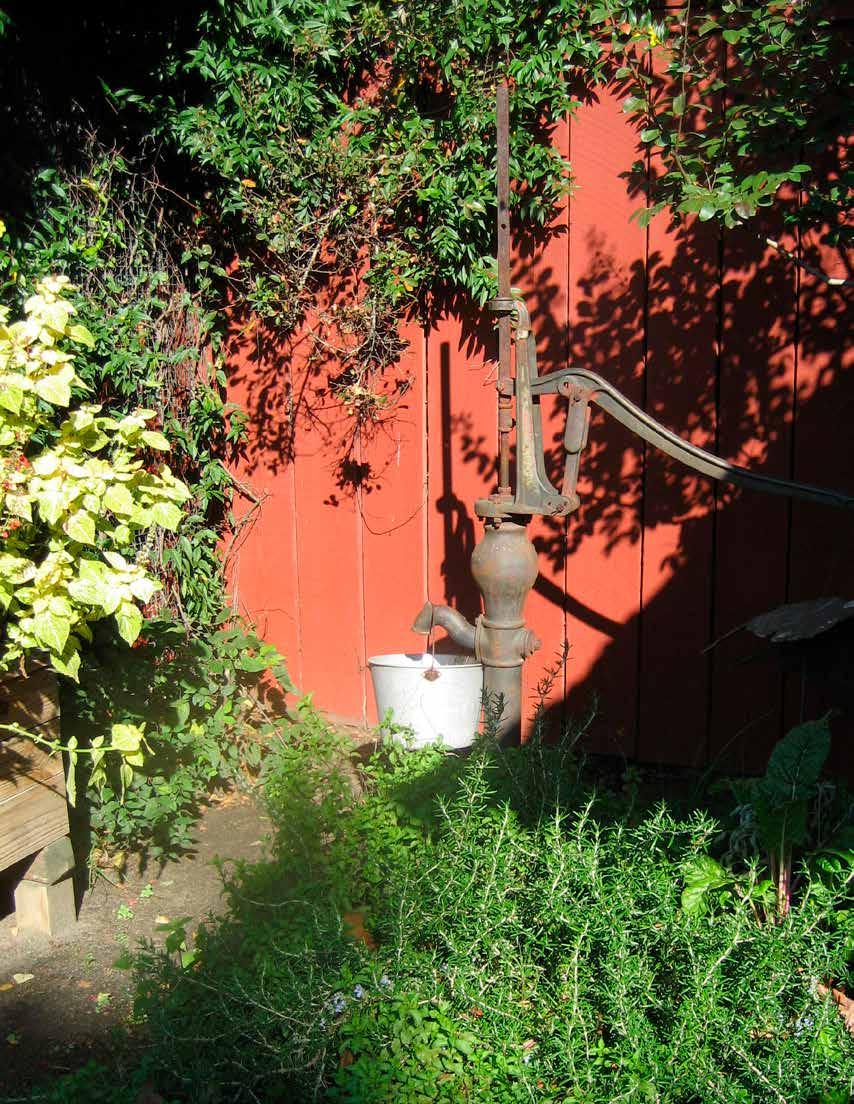
HSA Board of Directors
Amy R. Schiavone President
Linda Lange Vice President
Maryann Readal Secretary
Gladys McKinney Treasurer
Gayle Engels Botany & Horticulture Chair
Betsy Smith Education Chair
Open Development Chair
Casey King Membership Chair
Rie Sluder Nominating and Awards Chair Past President
Chrissy Moore Honorary President
Membership Delegates
Jackie Johnson Central District
Pamela Goetsch Great Lakes District
Kim Labash Mid-Atlantic District
Roxanne Varian Northeast District
Bill Varney South Central District
Sharon Hosch Southeast District
Lisa-Marie Maryott West District
Administrative Staff
Laura Lee Martin Executive Director
Cheryl Skibicki Development/ Membership Coordinator
Karen Kennedy Education Coordinator
Amy Dawson Archivist/Librarian
The Herbarist
Debbi Paterno Publication Design, Debbi Paterno Graphic Design
SP Mount Printing Printer
The Herbarist Committee
Maryann Readal Secretary
Lois Sutton, PhD Chair
Jean Berry
Shirley Hercules
Gayle Southerland
Barbara J. Williams
Susan G. Wood
The opinions expressed by contributors are not necessarily those of The Society. Manuscripts, advertisements, comments, and letters to the editor may be sent to:
The Herbarist, The Herb Society of America
9019 Kirtland-Chardon Rd., Kirtland, Ohio 44094 440.256.0514 www.herbsociety.org editorherbarist@gmail.com The Herbarist, No. 86 © The Herb Society of America
It is the policy of The Herb Society of America not to advise or recommend herbs for medicinal or health use. This information is intended for educational purposes only and should not be considered as a recommendation or an endorsement of any particular medical or health treatment. Please consult a health care provider before pursuing any herbal treatments.
uring our recent months of pandemic and civil unrest, Americans returned to the garden in numbers not seen since the Victory Garden era during World War II At that time seed and food shortages led to a new age of self-reliance and sacrifice . Recently, many of us discovered the joys of engaging with nature, growing a garden, and getting our hands in the dirt Needing new outlets to work through the stresses of the world (while still providing dinner), we began turning compost, kneading bread, and building new gardens from the ground up
I had just set up an exhibit for the March 2020 Boston Flower Show when the gravity of the pandemic’s severity hit The show ended abruptly, and I left behind the flowery landscapes to enter a bleaker world . Back at home, I found sorrel and rhubarb, the first signs of my faithful herb garden, pushing up to remind me that there is always hope for the intrepid gardener . Where there’s rhubarb, there’s pie! Sorrel became soup, and soon early violets topped my salads and became syrups and even candied confections that
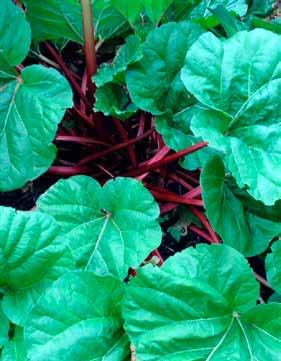
have brightened my days through all the seasons that followed As months passed, my “quarantinis” (cocktails with a splash of violet syrup) sweetened Zoom gatherings with friends who had been baking herbed focaccia, cooking from the garden, and experimenting with delicious methods of preserving garden botanicals for the seasons ahead
Once our gardens began to yield, many came to understand for the first time just how gratifying it can be to eat the fruits of your own labor at peak ripeness For many of my friends and peers in the world of horticulture, extended time at home and in the garden led to new passions and lucrative cottage industries . One friend began making a line of botanical bitters, another fermented kimchi and sauerkraut, and one buddy became a baker . A married couple found new creativity brewing botanical kombucha and making cheeses with
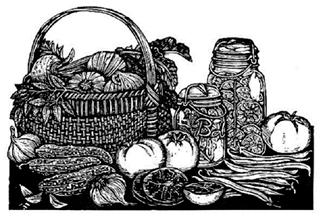

herbal rennet Some farmer friends created a local farm distribution hub to shift from dwindling restaurant sales to safe home delivery A neighboring beekeeper began growing and foraging flowers to supply the local market, while another began selling botanical cosmetics and cards online I even made forays into the local marketplace with herbal salves and wreaths; the proceeds helped to underwrite house repairs . Success of the local agriculture movement had already helped to set the stage, but during the pandemic, local produce, meat, fish, and beer reminded us just how delicious fresh food can be
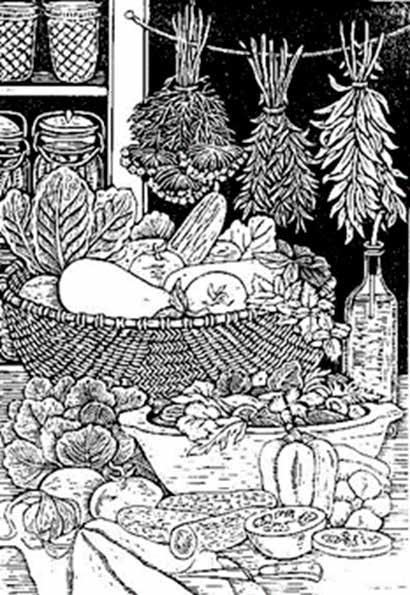
Even among those who continued to do their daily work, many discovered the pleasures of things that are homemade and a lifestyle that freed up time to tend a garden, educate a child, spend time in nature, or prepare a meal with love from scratch .
My generation was taught to “binge watch,” shop until we drop, go to a gym for exercise, and not to even bother cooking because frozen food companies did it better But in the process of coping with quarantine, many of us recalled what it means to be engaged happily in the hands-on processes of daily living . We began building wattle garden beds, planting fruit trees, raising chickens, eating seasonally, and even appreciating the difference chicken manure makes in our gardens
When my publisher asked if I would write a book on garden history, I knew it had to be something more than that; the problems of the world seemed too large simply to look backward and recount events of the past . I felt that I needed to use my voice and knowledge of historical context for a greater purpose I’m no Wendell Berry, but as a gardener, my superpower is knowing how to grow good things from dirt . Career and life have taught me that heirloom seeds carry lessons of history, stewardship, diversity, and resilience, so I accepted the writing challenge as a way to teach from the past and help create a more sustainable future
Garden historian Mac Griswold once said, “gardening is the slowest of the performing arts ” The pandemic beckoned me, a slow artist, to write The Heirloom Gardener – Traditional Plants and Skills for the Modern World.
On the surface it may appear that there are few things citizens of this nation agree upon, but I find that a large number of us hunger for meaningful discourse and authentic experiences, nearly as much as we look forward to getting together with friends and loved ones . My answer for this is to celebrate the renaissance that is happening beneath consumer culture radar screens—the return to locally sourced, artisanal food, and sustainable craftsmanship that is moving us to buy local, reminding us why we should care about the air, soil, and water quality where we live and garden .
I began writing to honor that return to the land and our newest forays into farmers markets, online sites, community building, and the real, honest-to-goodness flavor that we cultivate along the way from seed to table . As the pandemic raged on, I observed that some of the most resilient economic survivors were tied to the land—like the agritourism center down the street making elderberry tonics and syrups to bolster immune systems, and my friend’s local grain distillery, which turned production on a dime to provide our community with hand sanitizer . I saw the same resilience among farmers, fishmongers, and butchers They rallied to keep us safe at home and provided foundational alternatives during uncertain times .
There are historical lessons (from both sound and flawed environmental practices) that can help us navigate into a more sustainable future I wanted not to romanticize the past, but to celebrate sound lessons from history I wanted to teach lessons from our ancestors, across cultures and across time, that can reconnect us with the planet and places that nourish us The past offers us a toolkit for making every backyard and kitchen table a vibrant habitat, and a banquet for mind, body, and soul It forces us to rekindle old ways of strengthening community bonds and our reciprocal relationships with the natural world I wanted to write a book that would remind us that transformational change can begin with little seeds and intentions that every one of us is capable of planting
Viewed through a lens of ethnobotany and environmentalism, I chose to use an essay format to offer bite-sized and tasty glimpses into the world of plants and crafts that can enrich our lives To echo heirloom biodiversity, I wanted to create a work suggesting
activities that can directly help foster resilience Describing seasonal artisanal crafts, storied plants, and historic foodways, the essays help to make “home” work a rightful livelihood—and life a celebration I wanted to focus on cottage industries and horticultural wisdom that can help reshape the face of American industry My goal was to present a library of traditional plants and skills that we can preserve by growing and/or bringing them to market . The marketplace can be broadened through agritourism and the internet, enticing many of us to make a living working once again from home, and the land .
For herb enthusiasts, the book explores herbalism which blends horticulture, foodways, folkways, art, and science for the sake of wellness Think about traditional herbs like angelica, beebalm, heartsease, dandelion, elder, kelp, milkweed, nasturtium, rosemary, sage, sorrel, strawberry, and valerian . Crafts such as botanizing, making cordials, distillation, using edible flowers, herbalism, and making herbaria, teas, tonics, and wreaths can partner with our contemporary lifestyles and help bridge generations, communities, and cultural divides
One such storied plant profiled in the book is yarrow . An excerpt from that essay exemplifies the melding of traditional knowledge, personal experiences, and science found throughout the book:

Plants are storytellers that draw us into the natural world, and some of these botanical revelations can be
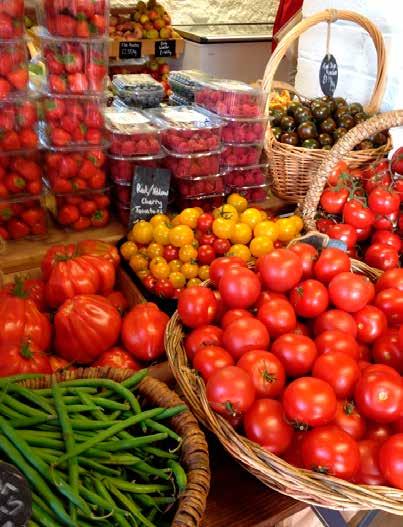
formative. When I was little, I cut my leg while chasing a dragonfly through a nearby field, and in response, some old Yankee neighbors introduced me to yarrow. They matter-of-factly plucked some yarrow leaves and handed them to me to crush in my fingers and hold against the cut. I was amazed: the bleeding stopped immediately. I’d witnessed magic from the natural world. A veil lifted, and I saw that plants had properties that ran far deeper than fragrance, taste, and beauty. They had deeper, scientific roots—and like people, they had homelands, personalities, names, and ways of expressing themselves. Most importantly, I learned that plants could be my allies…
Modern life can offer an array of technological wonders, but sometimes we must wonder if something meaningful isn’t being lost Are we missing a tangible bond with our natural world, and the deep satisfaction of connecting to the earth that was enjoyed by previous generations? Like opening an old family recipe box, I offer a glimpse into age-old gardening traditions and contemporary success stories from mentors, past and present Who taught you to love gardening? Did he or she teach you how to plant, cook, or preserve healthy herbs?
Sharing stories, like your own, with a generation of kids addicted to technology makes a difference . Studies show that children recognize more than one hundred corporate logos but know fewer than ten animals and plants in their own backyards Whom are you mentoring now? Wouldn’t we all do better to step
away from blue screens and step back out into a green world?
Heirlooms come in many forms, all of which involve a legacy of skill, craft, and memory . They include a cross-stitch sampler, a yellow edged photograph, a sourdough starter, or a seasonal holiday tradition observed across generations Unlike common antiques, heirlooms are artifacts of our life experience that beckon us to preserve them Most come with clues that require our participation—an old jar of bean seeds calling us to plant them, a much-loved quilt in need of mending . When our hands pick up the work, they retrace life skills that, with a stitch in time, can help these timeworn artifacts live on for another generation Heirlooms provide cultural context, common roots, and shared stories that help us to rebuild common ground
Heirloom plants and stewardship make up an undercurrent that runs throughout the book There is a recognition that heirloom plants were grown for flavor, not ease of shipping, and unlike newer varieties, they have proven their sustainability over time In the process of becoming seed stewards, we can also learn to create our own future heirlooms Have no doubt: thousands of preservation efforts like yours and mine all around the world can have a far greater impact than a global seed vault . Planting a garden with heirloom seeds is not only an act of preservation, it’s a living connection to those who have come before us, and a brighter future for those who will inherit what we keep alive Annually, our gardens remind us that with a tiny seed, we can engage a child, we can nourish a family, we can protect our environment Hope for the future can always be found where we plant seeds .
History found embedded in an old rhubarb patch, the remnants of an orchard, or a lichen-covered stone wall helps us read our
surrounding landscapes . Through them, we catch a glimpse of how someone applied craftsmanship and the environmental arts to live in accord with nature As heirloom gardeners rebuilding habitat, we intuitively remember the work our hands were born to do, as a bird follows its migratory path or a newly hatched turtle scrambles to the sea Knowing where we came from gives us firmer footing as we set out on our path forward
Now is the time to build new paths As gardeners we know that it is our responsibility to care for the environment that supports us There is joy and satisfaction in using our herbal roots to do so The environment needs advocates, and every yard affords us habitat . We have the opportunity to provide a helping hand right where we live The bigger the mainstream gets, the more room there is for an undercurrent The stream we restore, the garden we cultivate, or the child we engage all offer a path forward to a more hopeful future .
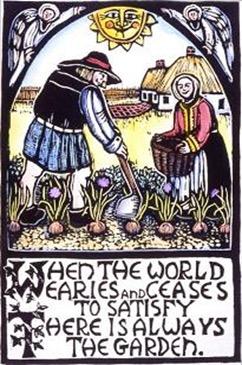
he unique scent of Persian herbs and spices that emanates from my kitchen cabinet is indescribable . From the sheer number of items, I cannot differentiate the scents without closer inspection . The strong fragrance often reminds me of the delicious dishes my father cooked during my childhood . Though culinary tastes are expanding within the United States, Persian dishes remain unfamiliar to many Americans . I took the opportunity to interview my father, an Iranian native who was a Persian chef in the Washington, D .C . area for more than 20 years, about the traditional herbs and spices he used in some of his most popular dishes .
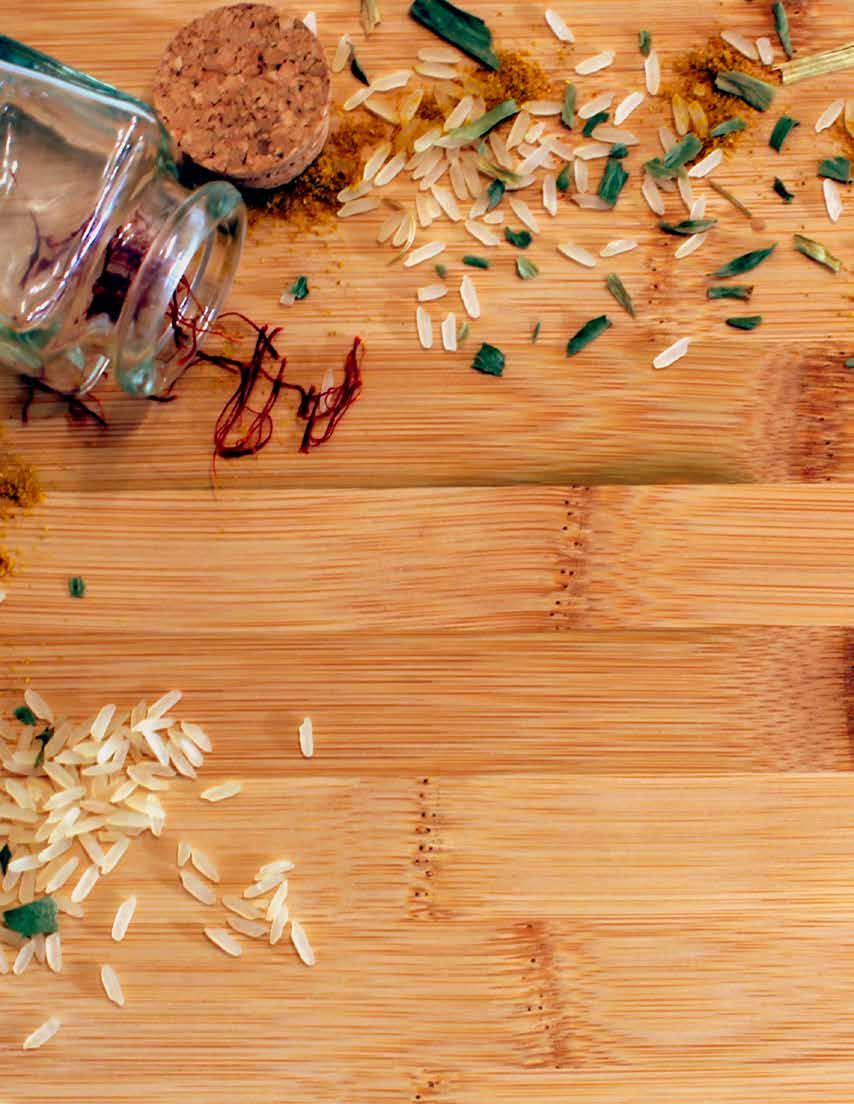 Zainab Pashaei
Zainab Pashaei
For those who want to attempt Persian cooking for themselves, an online search of the dishes my father specifies can provide you with a plethora of recipes from which to choose A few dishes may seem similar or be repeated, but that is because of their importance in Iranian tradition and culture While each dish is unique, regional or personal preference may add further diversity to the time-honored recipes
In addition to their culinary uses, the herbs described have historical medicinal value in Persian culture The 1930’s publication Useful Plants and Drugs of Iran and Iraq (Hooper and Field, 1937) provided the traditional or alternative medicinal practice noted for most of the herbs described For those who are curious about Iranian traditional medicine, the publication is a fascinating resource that serves as a snapshot in history An American anthropologist, Henry Field, from the Field Museum of Natural History in Chicago, and David Hooper, from the United Kingdom’s Wellcome Historical Medical Museum, were in Iran during King Reza Shah’s reign . They obtained herbarium specimens and documented traditional medicine folklore, which were disappearing with the “rapid advance of westernization” (Hooper and Field, 1937) Those were the priorities for both museums during the expeditions
The herbs are listed by common name with the Iranian name in Farsi script and then in English script So, let’s talk about what herbs Iranians love, what Persian chef, J . Pashaei, has to say about them, and their historical uses in traditional Persian medicine

Saffron/
/Zafran (Crocus sativus L.)
Chef Pashaei says most cooks reserve saffron for food served during celebratory occasions due to the fact it is very expensive and time-consuming to harvest and prepare Each flower produces
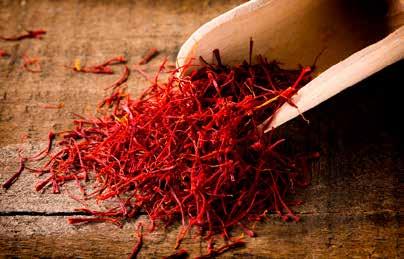
only three stigmas The aroma and color are strong, so not much is needed for use in food . Most Iranian saffron comes from the northeast in south Khorasan Kings and rulers in Iran and the neighboring countries used this herb historically in their food as a symbol of status and importance, especially when hosting important guests or celebrating an occasion such as Nowruz (New Year) . Iranians in the United States still use the herb sparingly today because of its high cost You can buy saffron in Middle Eastern grocery stores as well as most other grocers
Culinary Use: Grind the saffron stigmas with a mortar and pestle or a saffron grinder until it becomes a powder You may also grind saffron with a small amount of sugar (1/2 tsp .), which helps it dissolve into liquid or solid food more easily You can gently steep raw saffron (or powdered form) in a minimal amount of water and add to the dish as desired .
Notable Dishes: Zereshk polo ba morgh, saffron rice with barberries and chicken, is a favorite dish often served at celebrations and happy events The colors of the dish—yellow and red—are warm and make a beautiful presentation on the dinner table Gheymeh, which is split pea stew, is another dish that includes saffron The sauce for the stew is tomato-based, and saffron enhances the color and flavor of the stew made with beef or lamb, dried limes, and split peas Gheymeh is typically made during Muharram, a religious month of mourning for Iranian Muslims Since the dish takes a couple of hours to prepare, it is usually cooked in a large quantity and served to others Thinly sliced potato fries are an optional topping for the dish .
Traditional Medicinal Uses: Saffron was a favorite coloring material in medicine and food . It was used as a drug for its stimulant and antispasmodic affects (Hooper and Field, 1937)
Barberries/ زرﺷﮏ /Zereshk (Berberis vulgaris L.)
Chef Pashaei explained that barberries are a tart addition to many Persian dishes . If you eat the berries, the flavor is sour or torsh,ﺗﺮش Iranians love the combination of sweet and sour, so they combine barberries with sugar in cooking or make them into a jam Barberries grow on shrubs in northeast Iran in south Khorasan, the same region where saffron grows Like saffron, barberries are available in Middle Eastern markets . It, too, is often
expensive to purchase .
Culinary Use: Pick through the dried barberries for any impurities or small rocks . Soak them in water and drain after a half hour Rinse thoroughly and add to butter in a pan . On medium/low heat, sauté the barberries with a spoonful of sugar for a very short time—a minute or two—until the mixture begins to bubble . Remove from heat .
Notable Dishes: The most common use of this herb is in zereshk polo ba morgh (see the saffron section above) Another use is in kuku sabzi, like a frittata but with herbs such as cilantro, parsley, and dill The green herbs, called sabzi in Farsi, are baked with scallions or chives and eggs The dish is nutrient-dense, especially when you incorporate fresh herbs rather than dried . Some Iranians cook kuku sabzi with traditional herbs, while Chef Pashaei substitutes these ingredients with spinach and onion, which are more readily available in the U S Kuku sabzi is served at home around the Persian New Year (Nowruz) Although barberries are optional in the dish, the green and red colors contrast nicely for culinary presentation
Traditional Medicinal Uses: Consumption of barberries was a remedy for itchy skin and other dermatological irritations Decoctions of the plant material were useful for general health and creating pleasant smelling breath (Hooper and Field, 1937)
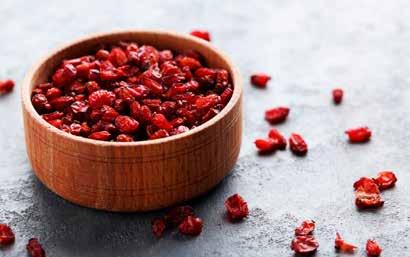
Cardamom/ /Hel (Elettaria cardamomum (L.) Maton)
Chef Pashaei says that cardamom is the go-to herb for spicing teas served at home It is also an optional ingredient in many dishes and is used to enhance the aroma and flavor of stews like gheymeh mentioned earlier Interestingly, cardamom does not grow in Iran as do saffron and barberries, but the herb is marketed heavily in this tea-drinking nation as a symbol of the culture According to another Iranian native, Abedehalsadat Abdolghafoorian, the herb is popular throughout the country, even as a souvenir in Mashhad, Iran, a pilgrimage city that is located near the border of Turkmenistan and Afghanistan (Pashaei, 2019)
Culinary Use: The cook opens the green seed pods, crushes the seeds, and adds them to the dish Many Iranians flavor their coffee or tea with the open seed pod or crushed seeds .
Notable Dishes: Saffron gives the Persian version of rice pudding, shole zard, its color but its flavor is from cardamom and rose water Cinnamon and thinly sliced almonds garnish this special occasion dessert . The most common use of cardamom is as a flavoring in tea, Iranians’ favorite beverage
Traditional Medicinal Uses: Cardamom was used as a masticatory herb that increased saliva and aided in digestion . It helped freshen the breath In recent years, Iranian scientists from Tehran University of Medical Sciences (Aghasi et al, 2018) conducted experiments to evaluate if cardamom is helpful for those with diabetes in regulating insulin and oxidative stress since cardamom is rich in volatile oils which have antioxidant and anti-inflammatory properties .

Dill/ ﺷﻮﯾﺪ /Shivid (Anethum graveolens L.)
Dill is native to the Eurasian region and is cultivated across all of Iran It has a unique flavor and often appears in rice to complement fish and lamb meals that Chef Pashaei prepares for his clients Many cooks use a lot of this herb around the New Year because the green color is symbolic of new beginnings and good health . You may purchase dried dill from supermarkets or use it fresh Though cheaper, dried dill loses flavor over time .
Culinary Use: Rinse, chop, and steam in rice dishes . If using dried dill, soak it in water before using You do not need to soak dill in water if the dried dill is being added to a stew or hot liquid
Green cardamom, combined with rosewater, flavor a traditional Persian rice pudding.
Notable Dishes: Sabzi polo, or herb rice, is a common dish that accompanies fish during the New Year celebrations The herb rice dish combines dill with parsley, cilantro, and chives or scallions Another dish, maast-o-khiar, is a yogurt and cucumber dip that utilizes dill and mint . There are many variations of maasto-khiar, and many Iranians simply use their favorite green herbs in the dip in combination with mint, while others make the dip exclusively with mint . The dip is served like an appetizer with bread or rice You may also use the dip on other foods as a condiment, or in a salad . Fresh dill and mint flavors are cool and refreshing, and I enjoy eating maast-o-khiar alongside kashke bademjan, which is an eggplant dip served warm with yogurt whey on top
Traditional Medicinal Uses: Dill was cooked with rice to restore appetite . It offers carminative properties, and Hopper and Field noted that the essential oil was medicinal (Hooper and Field, 1937) . Recent research by the Shaheed Beheshti University of Medical Sciences suggests that an oil-based dill extract may alleviate inflammation (Naseri et al, 2012)
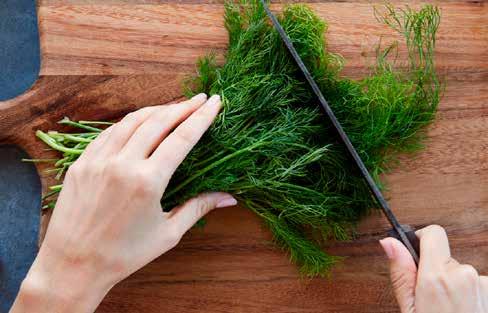

Damask Rose / ﺳﺮخ / Gul-e surkh (Rosa x damascena Herrm.)
This rose, historically grown in Kashan, Iran, is used for commercial production of rose water The flowers, harvested from early May to mid-June, become rose oil and rose water Chef Pashaei uses rose water to flavor many Persian desserts . The dried petals are used for tea or as a garnish in dishes (for example on top of the yogurt appetizer mentioned earlier, maast-o-khiar) Using the flowers to make jam is less common Many Iranians call this rose, gul-e Mohammadi, or Mohammad’s flower Gul, , , is the Farsi word for flower
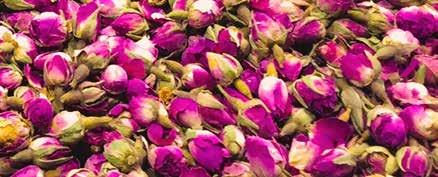
Culinary Use: Steep the dried rose petals for tea or use as a garnish . Fresh roses are distilled for rose water This product can be purchased at Middle Eastern markets and now in most U S groceries Use the rose water according to the recipe of your dessert dish
Notable Dishes: There are many notable dessert dishes in Persian culture Halva is a traditional funeral dessert . Its sweet and exotic flavor comes from rose water—distilled from fresh roses—and other ingredients such as cardamom and saffron Baklava and shole zard also utilize rose water, but these are more celebratory Zoolbia and bamieh, fried dough balls, with rose water, saffron, and sugar are other delicious sweets Zoolbia and bamieh are sold at Persian bakeries and are eaten by Iranian Muslims as a special treat for fasting in the month of Ramadan
Traditional Medicinal Uses: Rose petals and rose water were used as an astringent, which means it causes cells or tissues to contract and dry, or restricts the secretion of fluids (Hooper and Field, 1937) Mohaddese Mahboubi noted rose water’s varied uses as an antiseptic and antispasmodic as well as a fragrant calming agent for religious ceremonies (Mahboubi et al, 2015)
Fava Beans/ﺑﺎﻗﻼ / Baghali (Vicia faba L.)
Chef Pashaei acknowledges that fava beans have a strong smell and that some prefer lima beans over the Iranian native legume . Fava beans are nutrient dense and complement many meals However, like peanuts, the fava bean is known to cause allergic reactions in some, so caution is important when serving them to guests .
Culinary Use: These beans are steamed and eaten like edamame, although you should remove the beans from the seed pod and peel the skin before they are consumed Boil the peeled beans until thoroughly cooked before adding to rice or other dishes .
Notable Dishes: Baghali polo, or dill rice with fava beans, is the most common dish that utilizes fava beans The dish is served with chicken, lamb, or fish Many Iranians eat the steamed beans as a snack .

Traditional Medicinal Uses: Fava bean shoots were used to awaken people from a drunken stupor Although literature does not elaborate on how a drunk is awakened with the fava bean shoot, I can imagine the strong smell is a factor . The bean was noted as an excellent horse food (Hooper and Field, 1937)
Dried Lime/ ﻟﯿﻤﻮ اﻣﺎﻧﯽ / Limu Amani (Citrus aurantifolia Swingle)
If you ever hear an Iranian refer to dried lemons, Chef Pashaei clarifies that they usually mean limes, because nothing else is readily available in Iran For Iranians, there is no differentiation between “dried lime” and “dried lemon .” Limes are mainly grown in southern Iran in Shiraz, a beautiful city with rich culture
Culinary Use: Pierce a hole in the dried lime and boil in a stew . If you happen to crush the lime, remove the seeds inside or the food will be bitter The dried lime used for cooking is not the seedless Persian lime known to Americans, Citrus ‘Tahiti,’ but Citrus aurantifolia. Lighter-colored limes are better for gheymeh (mentioned above) . Darker colored limes are better for ghormeh sabzi.
Notable Dishes: Ghormeh sabzi, or herb stew, is a nutrientdense dish that is hearty and warm . Some say this is Iran’s national dish It is cooked during all times of the year, and you can find it at almost any Iranian restaurant The sourness from the dried lime enhances the flavor of the herbs used in this dish, which can include parsley, cilantro, fenugreek, leeks, spinach, and scallions For the flavors to infuse with the kidney beans and beef or lamb, ghormeh sabzi requires a couple of hours on the stove, so preparing it for dinner is a labor of love for family or friends Another hearty stew, khoresht karafs, which is celery stew, also utilizes dried limes and herbs It is equally delicious but less popular in Iranian homes and restaurants .
Literature Cited
Dried Limes. Photo credit: Robyn Lee/seriouseats.com
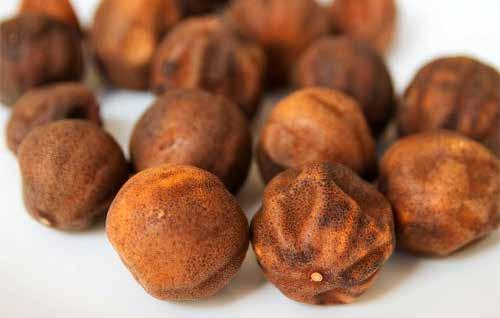
Traditional Medicinal Uses: Useful Plants and Drugs of Iran and Iraq does not note any traditional practices for dried lime (Hooper and Field, 1937) . However, a study from the Isfahan Cardiovascular Research Center evaluated the effects of freshly dried lime peel in animal diets and its ability to slow plaque buildup in arteries (Boshtam et al, 2013)
One important cultural dish for Iranians that was not highlighted above, but is a personal favorite, is fesenjan, a pomegranate and walnut stew with chicken If you like the combination of sweet and sour, give it a try . Iranians consider this a luxury and is popular at weddings
If you have the opportunity to be a guest in a Persian home, please accept the invitation You will enjoy the heartfelt hospitality, delicious food, and fragrant pantry
Medicinal Disclaimer: It is the policy of The Herb Society of America not to advise or recommend herbs for medicinal or health use. This information is intended for educational purposes only and should not be considered as a recommendation or an endorsement of any particular medical or health treatment.
Aghasi, Mohadeseh, et al. 2018. The effects of green cardamom supplementation on blood glucose, lipids profile, oxidative stress, sirtuin-1 and irisin in type 2 diabetic patients: a study protocol for a randomized placebo-controlled clinical trial. BMC complementary and alternative medicine. BioMed Central. Accessed on November 30, 2019. Available from http://www.ncbi.nlm.nih.gov/pmc/articles/PMC5772716
Boshtam, Maryam, S. Asgary, J. Moshtaghian, G. Naderi, and N. Jafari-Dinani. Impacts of fresh lime juice and peel on atherosclerosis progression in an animal model. ARYA atherosclerosis. Isfahan Cardiovascular Research Center, Isfahan University of Medical Sciences, 2013. Accessed on November 30, 2019. Available from http://www.ncbi.nlm. nih.gov/pmc/articles/PMC3933061
Hooper, David and Henry Field. 1937. Useful plants and drugs of Iran and Iraq. Chicago: Field Museum Pr. Accessed January 20, 2021. Available at https://www. biodiversitylibrary.org/item/19714#page/3/mode/1up
Mahboubi, Mohaddese. 2015. Rosa damascena a holy ancient herb with novel applications. Journal of Traditional and Complementary Medicine. Accessed on November 30, 2019. Available from http://www.sciencedirect.com/science/article/pii/S2225411015000954
Naseri, Mohsen, et al. T 2012. The study of anti-inflammatory activity of oil-based dill (Anethum graveolens L.) extract used topically in formalin-induced inflammation male rat paw. Iranian Journal of Pharmaceutical Research: IJPR. Accessed on November 30, 2019. Available from www.ncbi.nlm.nih.gov/pmc/articles/PMC3813168/
Pashaei, Zainab. 2019. Interview with Abedehalsadat Abdolghafoorian.
Bibliography
Avey, Tori. All About Fava Beans: How to Cook, Soak, Peel and Freeze. Tori Avey: Every Day Inspired by the Past. Accessed November 30, 2019. Available from toriavey.com/how-to/ fava-beans-how-to-cook-soak-peel-freeze
Falkowitz, Max. Spice Hunting: Limu Omani (Dried Limes). Serious Eats: The Destination for Delicious Serious Eats. Accessed November 30, 2019. Available from www. seriouseats.com/2010/10/spice-hunting-iranian-limu-loomi-omani-dried-limes.html
If you want to grow native roses, there is a tangled thicket to wade through first.
The genus Rosa is huge . The Plant List includes 5,370 botanical names that have been attributed to roses over the time since the Latin binomial system was introduced . Currently, 436 species names are accepted (The Plant List) . This does not include all the named cultivars and varieties in the trade and grown in gardens around the world . These add another 20,000, or more .
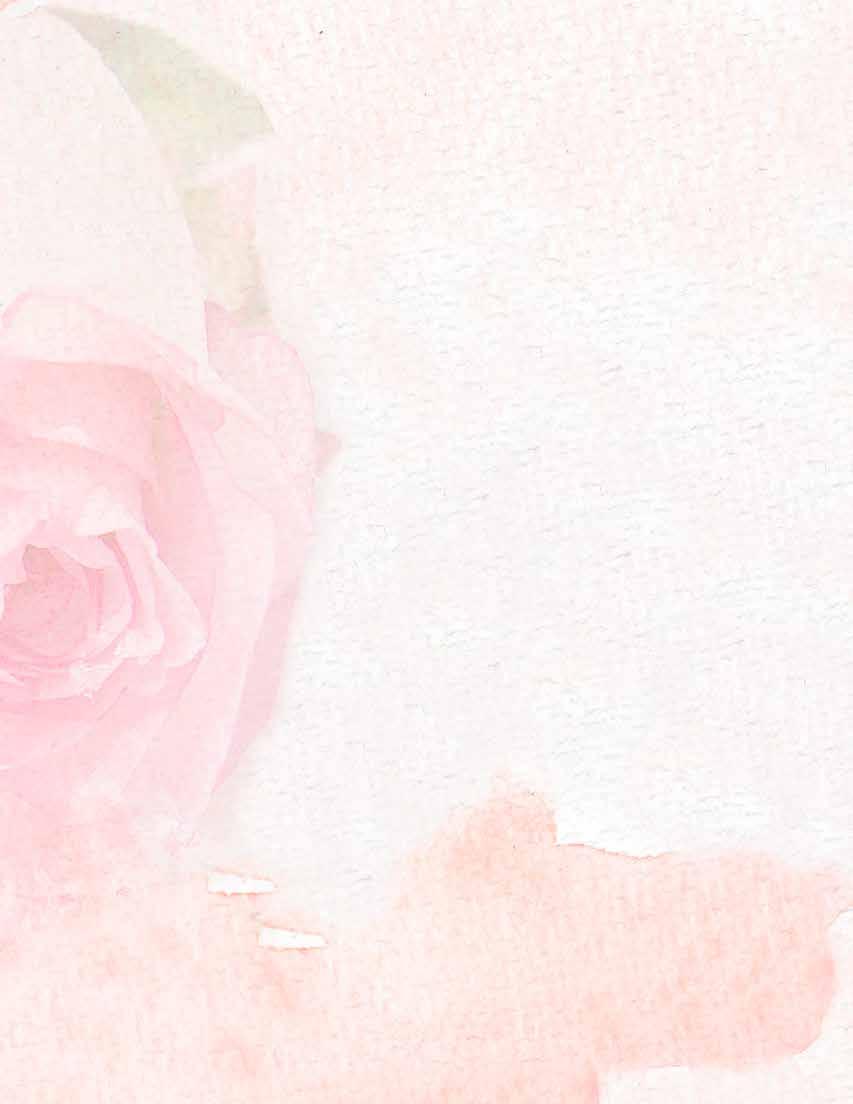
Many more native species were recognized in the past . Geneticists, taxonomists, and researchers have discovered duplications and have narrowed the number (Bruneau, 2007; Flora of North America, 1993) . There are now just 21 accepted native North American species .
It is especially important to use botanical names when referring to native roses because in several cases separate species have been labeled using the same common name . For example, the names California rose, Virginia rose, Cherokee rose, and woods rose are applied to many different plants . The names prairie rose and pasture rose are perhaps the most over-used, with several species given these common names across many years and locations .
Barbara